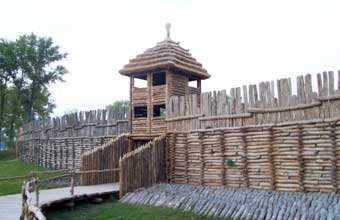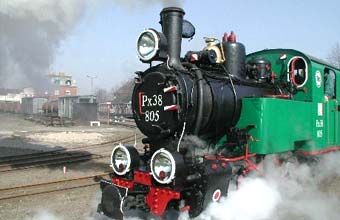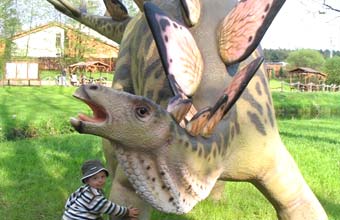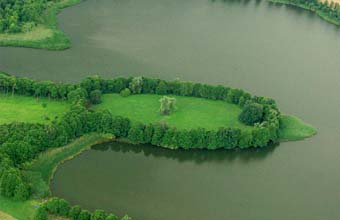Area
The settlement in Biskupin
Discovered in 1933 is associated with the cultural circle of the Lusatian culture, lasting from the Middle Bronze Age from the fourteenth century BC to the early Iron Age of about the fifth century BC Based on research logs it was discovered that the borough in Biskupin was probably founded in 738 years BC. It was settled on the marshy island on Biskupińskie Lake which now is a peninsula. On the peninsula only a part of the settlement was reconstructed. The most characteristic of them is the gate. On both sides, there are two sections of the shaft and the breakwater. There is also a museum, and every third week of September at the Biskupin borough a festival takes place. Biskupin is located 5 km east of the international route E5, running through Poznan, Gniezno, Żnin to Gdansk and Bydgoszcz, 10 km south of Żnin.
more about: www.biskupin.pl

Narrow-Gauge Railway in Żnin
It is an important tourist attraction on Piast Route, we invite you to travel round the picturesque countryside located between Pomerania, Kujawy and Wielkopolska. The varied landscape, numerous forests full of wildlife, lakes rich in fish and some interesting historical monuments and other attractions attract many tourists who want to visit our interesting and hospitable region every year. In the summer, there are three trains running on the route ŻNIN - VENICE - BISKUPIN – GĄSAWA of length of 12 km.
more about: www.ciuchciaznin.pl

Dinosaur Park
ZAUROLANDIA in Rogow - is one of the largest park in Poland. It lies between the national road number 5 (a distance of 12 km from Biskupin) and the Rogowskie Lake. On an area of nearly 20 acres, along the two-kilometer long path are more than 80 life-size models of dinosaurs. A number of educational boards give a closer look for tourists on geological periods, the system continents, the most interesting places of fossils discoveries, lifestyles, diets of individual species, and of the great cataclysms and hypotheses on the causes of extinction. A two kilometer long path leads amongst the thematic genre scenes, natural and unique vegetation create a unique microclimate. For children – it is a unique playground.
more about: www.zaurolandia.pl

Settlement in Izdebno
On the peninsula of the Wolskie Lake in the village of Izdebno is an oval ring-shaped mound with diameters 225 × 125m which is a relic of the Lusatian culture settlement similar to Biskupin discovered by members of the Biskupin expedition in 1935 as a result of extensive investigations for archaeological sites. There have been no excavation on this object. Only in the 50s local school teacher had dug two large holes on the shaft of the early city, and the Poznan University archeology students in 1948, founded a small probe in the courtyard of the castle and completed exploration work at the time of digging up to wooden structures, which confirmed the earlier hypothesis of a sister and castles in Izdebno and Biskupin. The settlement in Izdebno does not stand out from Biskupin size and had exactly the same buildings allocation. The houses stood in regular rows separated by streets. The city was also well known for Biskupin roundabout way along the ramparts. Conducted in 1975 archaeological expedition showed that at the feet of peaty soil has a well-preserved wooden remains of the castle Lausitz, built around the fifth century BC The settlement gradually evolved into a defensive stronghold. From the early Middle Ages preserved even much higher than in Biskupin shafts.
Izdebno lies on the eastern shore of the narrow Wolskie Lake in a Wełna river basin, about 3 km from Rogowo, halfway between Poznań and Bydgoszcz,near the national road No. 5. The settlement is not in the village, but on a peninsula at the southern end of Wolskie Lake. From Rogowo one should leave to the north, then turn left into the local road towards Janowiec Wielkopolski. The described location is situated at the road bend, where it exceeds the reduction in the gutter of the lake. On the peninsula leads the path that ran to the shafts of ring settlement.
source: Wikipedia


